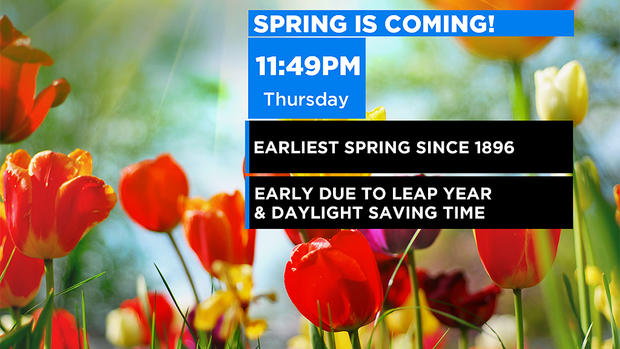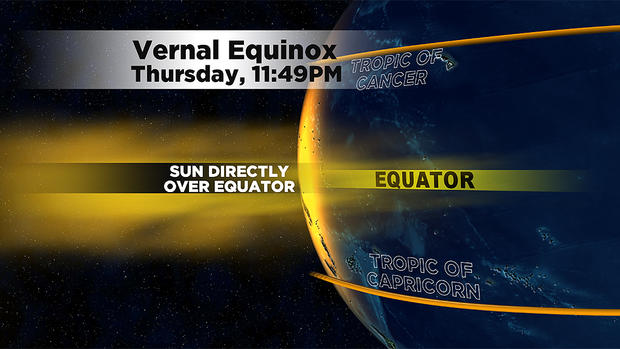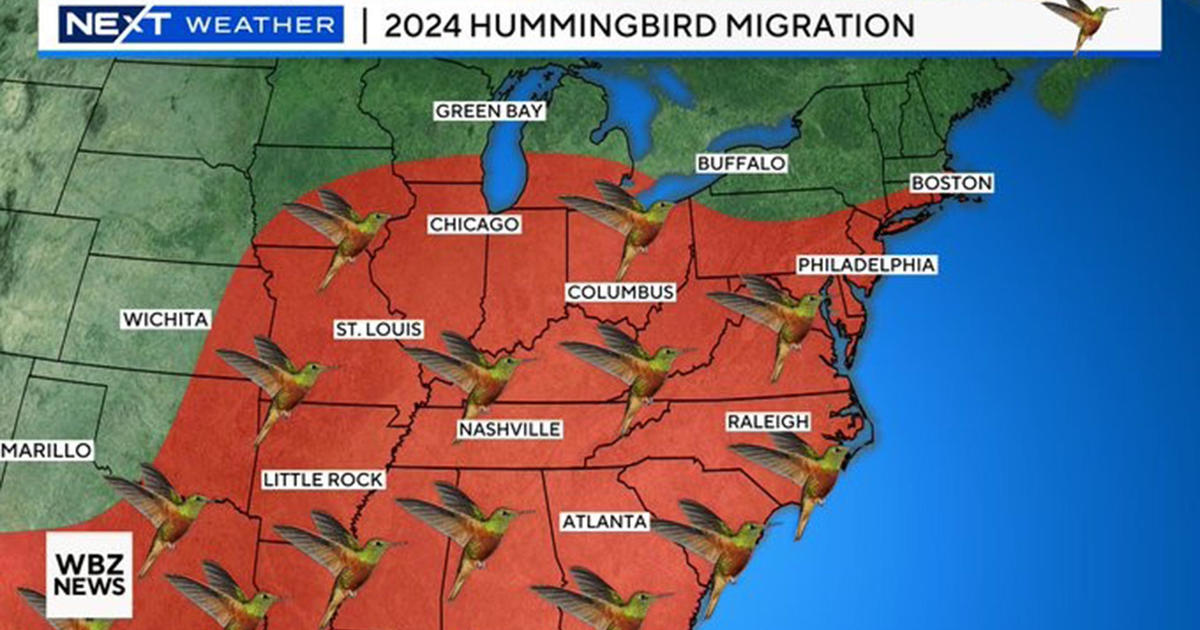Earliest Spring Since 1896 Arrives Thursday, After Chance Of Snow
BOSTON (CBS) - After a fresh dusting of snow on Tuesday and another chance of snow on Thursday morning, we're actually closing in on the earliest arrival of Spring in more than 100 years. Which, isn't hard to imagine, considering the later sunsets and longer period of daylight recently has increased the amount of singing birds and allowed flowers to start blooming across the city.
But WHY so early this year?
Most years (well at least in our lifetime), the spring equinox (or vernal equinox) has typically occurred on March 20th or March 21st. This year however, in all U.S. time zones, the equinox happens on the 19th! The last time spring arrived this early in the Calendar year was in 1896, 124 years ago! The two main reasons we are seeing such an 'early' spring is the combination of leap years and daylight saving time. Also, do not expect to see a spring arrival on March 21st again for quite some time. Due to the time zone differences, an equinox on the 21st does not occur in the U.S. during the entire 21st century. You will have to wait until 2101.
The spring equinox marks the moment the sun crosses the celestial equator (the imaginary line in the sky above Earth's equator), from south to north. The equinox happens at the same moment worldwide, though our clock times reflect a different time zone. While spring begins in the Northern Hemisphere, the equinox announces fall's arrival in the Southern Hemisphere.
So what is the Spring Equinox?
The word equinox comes from the Latin words -aequus (equal) and nox (night) meaning 'equal night'. On the equinox, the length of day and night is 'nearly' equal in all parts of the world. During this time, earth's two hemispheres receive the sun's rays about equally.
Equinoxes are the only two times a year that the sun rises due east and sets due west for all of us on Earth. If you were standing on the equator, the Sun would pass directly overhead on its way north.
Remember, the earth never orbits upright. The earth is tilted on its axis by about 23.5 degrees! That's why we have seasons. During the spring equinox, the sun passes overhead, with the tilt of the earth is zero relative to the sun, which means that earth's axis neither points toward nor away from the Sun. After the spring equinox, the Northern Hemisphere tilts toward the Sun. This is why we start to see longer periods of daylight, in turn; it gets warmer with more sunshine throughout the day. Yeah!
ALSO... let me point out right now... the spring equinox is NOT the only time you can balance an egg, although I'm sure you'll see this home experiment all day long on social media websites, especially with many kids home from school. It is a myth that you can balance an egg on its tip ONLY on the spring equinox due to the earth's tilt. You can actually balance an egg any time of year! So go ahead and try it, but have some patience.
Lastly, celebrating the first day of spring has been a tradition observed by ancient cultures for centuries. There are many ancient sites that mark the equinoxes and solstices (the start of summer and winter). Like the Mayans, who built a huge pyramid around the year A.D. 1000.
The play of the sun's light as it tracked through the sky, on the pyramid signaled the beginning of the seasons. On the spring equinox, it looks like a huge snake is slithering down the steps. The Mayans called this day "the return of the sun serpent."





